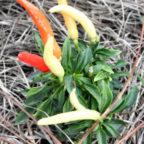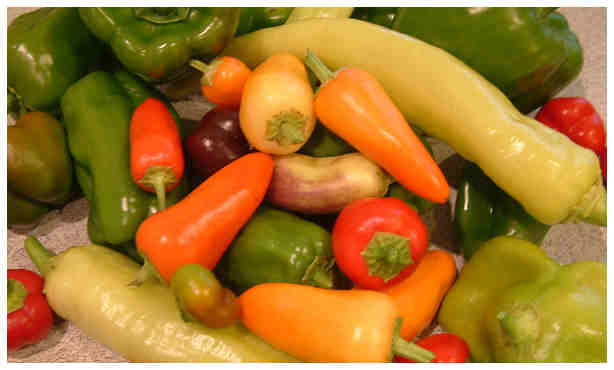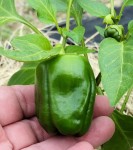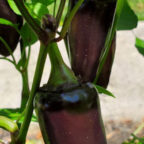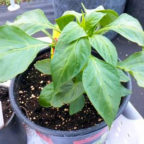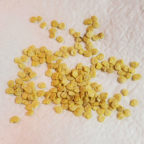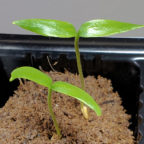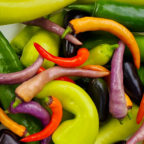What Kind of Soil Do Peppers Like?
So what kind of soil do peppers like? Glad you asked, because the soil you use for planting your peppers has a lot to do with how they grow.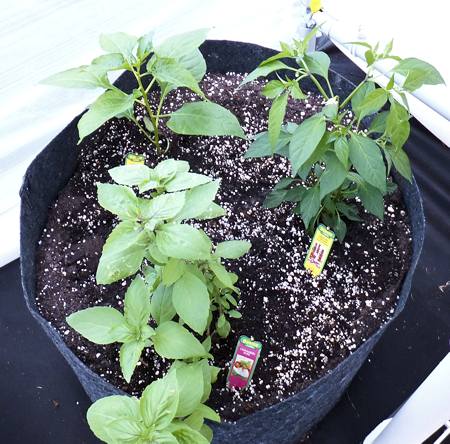
Soil Types
There are three main soil types. Different locations have different soils, so if you plan to plant your garden in the ground, you need to know what you have.
- Sandy
- Clay
- Loam
If you want to know more about these soil types, here’s a post all about them. But on to what the peppers like.
Peppers Like What Soil?
As you might guess, peppers like a balanced soil — not quite sandy, not quite clay. But let’s think about that a little more.
Wild peppers originated in Central and South America, and the soils there are definitely more sandy than clay or loam — so it’s loose and well-draining. But there are also peppers which grew in soils that were a bit richer, if they grew in a more jungle-ish area. Still, the soil tended to be well-draining.
That is where peppers started; what about growing them in your garden?
How Does Your Garden Grow?
Wild peppers were in more sandy soil, but now our pepper plants are domesticated, and their needs have some changes.
Peppers still like well-draining soil, but not necessarily sandy. They do like their nutrients, though, so not too well-draining — they just don’t like to constantly have wet feet. Loose soil lets the new, small roots penetrate easily, in their search for nutrients and moisture. The looseness also lets the roots breath a bit.
They also like their nutrients! We’re growing peppers for production, or to be ornamental (which is production, if you think about it). They need nutrients in the form of fertilizer, whether it is organic, non-organic or a mix of both, to support their bounty. Just remember not to over-fertilize. (Here’s more information about organic fertilizers and fertilizing pepper plants.)
I’ve been mostly talking garden soil, but the same also applies to peppers grown in containers. One extra thing to remember about containers is that they need drainage. Make sure your planter has a hole for the water to drain out, or use a grow bag which lets the water drain without holes.
How Long Does it Take to Grow a Pepper?
How long does it take to grow a pepper plant? Growing peppers is really rewarding (not to mention tasty!), but sometimes frustrating at first. Let me tell you why.
Growing Peppers From Seed
The double-trouble for how long it takes to grow a pepper plant from seed is that peppers like more warmth to germinate from seeds, and they take longer (on average) to sprout, compared to other plants (tomatoes, beans, etc.). And if you are growing the really hot varieties of peppers, you could wait up to a month before you see the little peppers starting to emerge from the ground.
Fortunately, if you get a heat mat for seed germinating, it helps a great deal. The pepper seeds appreciate the extra warmth, and they germinate a good deal faster — even the super-hot varieties. I’ve used it lots in the past, and I just got myself a new one this year.
Good rule of thumb if you plan to go the seed route; plant the pepper seeds 7 to 9 weeks before the last frost date for your area — more like 11 to 12 weeks for the super-hot peppers. And you may want to wait until your nights are consistently 55 degrees of warmer before transplanting to the garden.
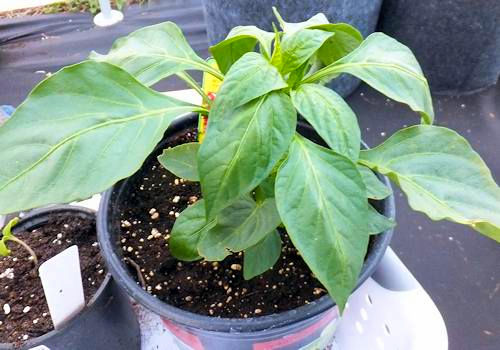 Growing Peppers From Plants
Growing Peppers From Plants
If you are too late to start seeds (or just don’t feel like it) but want to grow peppers, you can get plants from your local garden center. It’s more expensive than growing from seed, but it is easier — just buy, get home and plant. Your local garden center will likely have varieties that grow well in your area.
It’s awfully tempting to buy a plant that already has peppers on it — but try not to. Otherwise, cut off the peppers before planting. Unless it’s in a large pot (at least 2 gallons), the plant is pretty stressed trying to grow with very little soil. Adding more stress from blooming and growing fruit, your pepper will be set back quite a bit.
Get a plant that looks healthy — not spindly, and not with lots of roots growing way out of the bottom (a few OK — lots, not so much).
And keep in mind…unless you have some kind of protection for your plants, don’t transplant them to the garden before the last frost date for your area. Better yet, wait until the nighttime lows are consistently 55 degrees or more.
Now It’s in the Ground — How Long Does it Take to Grow a Pepper Plant?
Assuming your weather is decent (days at least in the upper 60s, lows no lower than 55) and the plants get plenty of sunshine, you can start seeing blossoms pretty quickly — many times within a week or two from transplanting. 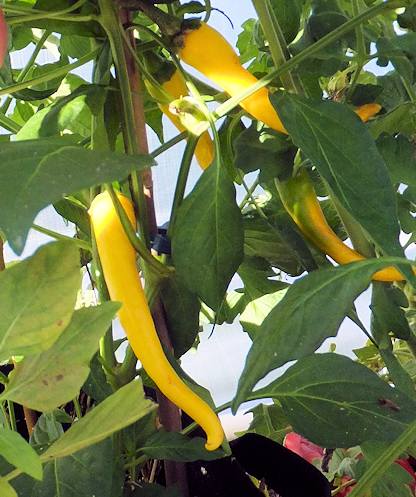
As to how long before you get a pepper that is “ready-to-eat-green”, the answer is “it depends”. A sweet pepper will grow fruits much faster on average than the really hot peppers. And the warmer your climate, the faster your peppers will grow and ripen.
You’ll have to check the days to maturity for the peppers you plan to grow — it lists the days from setting out in the garden until you see the first ready-to-eat-green fruits. On average that is 65 to 75 days for sweet peppers and 75 to 90 days for the hotter peppers. And if you grow the really hot ones like habanero or bhut jolokia, you could be waiting for more than 100 days.
If you want ripe peppers — after they have turned their final color (red, orange, yellow, etc.) — be prepared to wait up to another 2 weeks.
FYI, the peppers in the photo are the variety cayenne yellow.
Peppers Planned for 2020
It’s pepper seed time! I decided that I would go the “all seed” route for the 2020 growing season. Although I probably won’t be doing any actual planting of seeds for several more weeks, I have all my seeds ordered. So what’s in store for 2020 in my new location?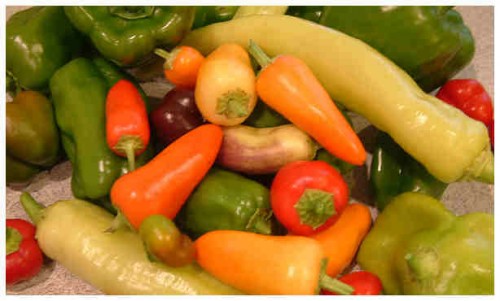
Hot Cha Cha!
I don’t have any super-hot peppers planned for this year, but I do have some hot ones ordered! Here’s the hot pepper seeds on the way:
- Purple Jalapeno:Â Seeing as I am also growing a non-heat jalapeno, I wanted to make my spicy jalapeno a different color so I could tell the two apart.
- Bolivian Rainbow:  I grew this many years ago, then had a hard time finding it again. Success! This is mostly ornamental, but the peppers are definitely edible and quite hot. I love the way these peppers have multiple colors of peppers on the bush all at once.
- Buena Mulata: Another purple pepper. This one is more like a cayenne pepper, and about the same heat.
- Tricked You Jalapeno: This is the no-heat jalapeno. I tried to grow the “Fooled You” a few years back, and I guess this one is the newer version.
- Numex Suave Orange: Supposedly a no-heat habanero. I am not sure that every pepper will be no-heat, so I will be careful when tasting the peppers.
- Aji de Sazonar: Another no-heat pepper, this time more like a serrano in shape. Supposed to be great for drying and grinding into a seasoning powder.
- Tobago Seasoning: A no-heat scotch bonnet pepper. Again, not sure that the heat will be absent from all peppers, but I imagine that the seeds and membranes will be what’s really hot.
A few more of the non-heat hot peppers than is usual for me, bit it will be really interesting to see how “no heat” the no heat peppers will be. Hmmm, now that I have all these listed out, I may hold off on either the Numex Suave Orange or the Tobago Seasoning until next year.
Cool It!
As to the sweet peppers, here’s the run-down:
- Chilly Chilli: Just an ornamental pepper. I seem to recall I tried this a few years back and didn’t have any luck, but I wanted a low-ish growing ornamental pepper that was safe to brush up against (i.e., no hot oils getting on my hands or clothes).
- Yum Yum Mix:Â Mini bell peppers, kind of like the ones I’ve been seeing pop up in the grocery stores lately.
- Sweet Pickle: Another ornamental, a lot like Bolivian Rainbow, but with a slightly larger pepper. This one is like Chilly Chilli, supposed to be safe to brush up against, etc.
- Petit Marseillais: Something like a cross between a bell pepper and a frying pepper, but more like the bell. Supposed to be very sweet.
- Roumanian Sweet: This is a bell pepper. I grew it many years ago, it changes color from a pale greenish-white to purple to orange and then red. It was quite tasty.
All in all, this should be an interesting year for peppers.
Planting Seeds
I have a couple new seed sprouting things I want to trial, so that post will be coming up (actually, probably more like a series of posts).
